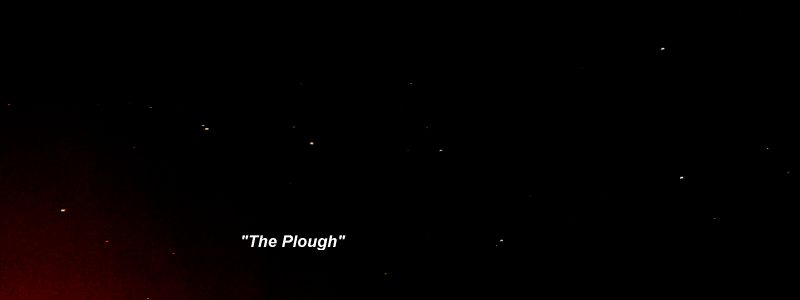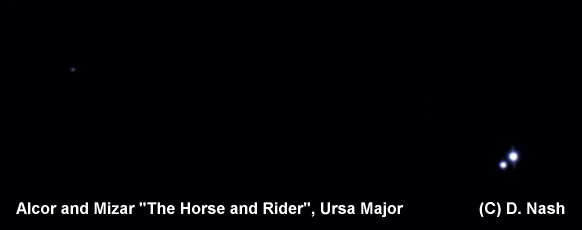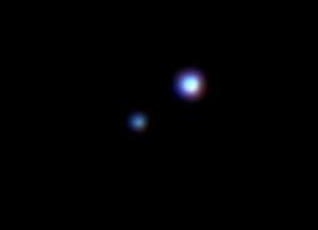| Home |
|
|
| Mizar and Alcor |
|
The constellation of Ursa Major (the Great Bear) contains probably the most famous group of stars ever: The Plough, sometimes known as The Big Dipper.
This is technically an Asterism (ie. a group of stars that form some noticable shape). The second star of the "handle" is actually a pair of stars called Mizar and Alcor. You may just be able to notice Alcor, the dimmer one, with the unaided eye.
Move the mouse pointer over the pictures to expand and see captions.
Clicking a picture will show just the captioned version.
|
|
|
"The Plough" in Ursa Major

|
The second star from the end of the handle of the "plough" (or Big Dipper) asterism in Ursa Major can be seen with the unaided eye to be actually two stars. These were named by the Arabs as the Horse and Rider. Their modern names are Mizar (the bright one, officially Zeta Ursae Majoris) and Alcor (80 Ursae Majoris).
This picture was taken with an SLR camera using a 50mm lens. The glow in the corner is from a street light! |
| to top |
|
16 June 2004: Mizar and Alcor

|
Although Mizar and Alcor do not themselves form a binary pair, this picture shows that Mizar is a double star, comprising two components 14 arc-seconds apart.
This picture was created from the best 210 frames taken at 10fps. The shutter speed was 1/25s and gain 50%. Gamma was mid and saturation maximum. |
| to top |
|
16 June 2004: Components of Mizar

|
Mizar (Zeta in Ursa Major) is a binary star whose components orbit each other, taking around 5000 years to do so. It has been discovered by spectroscopic methods that both Mizar A and B are each binary stars, although the companions to each cannot be seen from Earth.
This picture was created from the best 200 frames taken at 10fps. The shutter speed was 1/25s and gain 5%. Gamma was mid and saturation maximum. |
| to top |
|
 |
|
All text and images copyright and may not be used without permission
|
|



